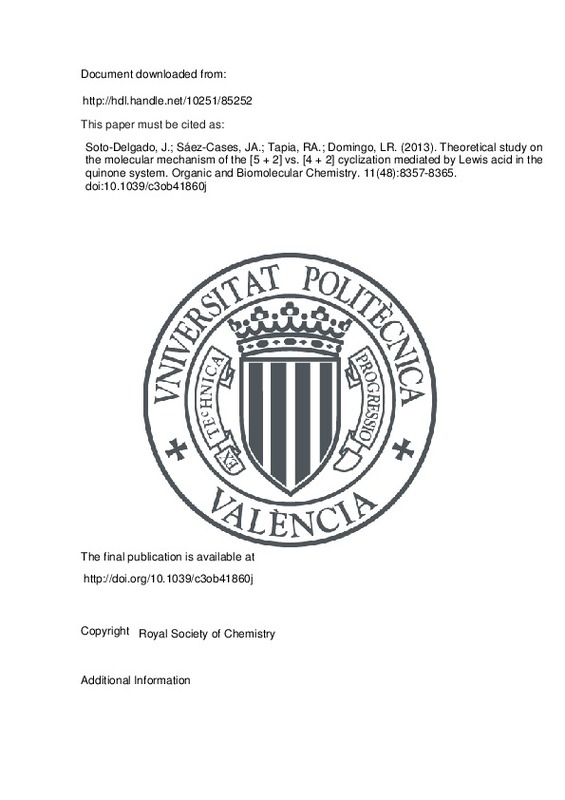JavaScript is disabled for your browser. Some features of this site may not work without it.
Buscar en RiuNet
Listar
Mi cuenta
Estadísticas
Ayuda RiuNet
Admin. UPV
Theoretical study on the molecular mechanism of the [5 + 2] vs. [4 + 2] cyclization mediated by Lewis acid in the quinone system
Mostrar el registro completo del ítem
Soto-Delgado, J.; Sáez-Cases, JA.; Tapia, RA.; Domingo, LR. (2013). Theoretical study on the molecular mechanism of the [5 + 2] vs. [4 + 2] cyclization mediated by Lewis acid in the quinone system. Organic and Biomolecular Chemistry. 11(48):8357-8365. https://doi.org/10.1039/c3ob41860j
Por favor, use este identificador para citar o enlazar este ítem: http://hdl.handle.net/10251/85252
Ficheros en el ítem
Metadatos del ítem
| Título: | Theoretical study on the molecular mechanism of the [5 + 2] vs. [4 + 2] cyclization mediated by Lewis acid in the quinone system | |
| Autor: | Soto-Delgado, Jorge Sáez-Cases, José Antonio Tapia, Ricardo A. Domingo, Luis R. | |
| Entidad UPV: |
|
|
| Fecha difusión: |
|
|
| Resumen: |
[EN] The thermal and Lewis acid (LA) catalyzed cyclizations of quinone 1 involved in the synthesis of Colombiasin A and Elipsaterosin B have been theoretically studied using DFT methods at the B3LYP/6-311G(d,p) computational ...[+]
|
|
| Palabras clave: |
|
|
| Derechos de uso: | Reserva de todos los derechos | |
| Fuente: |
|
|
| DOI: |
|
|
| Editorial: |
|
|
| Versión del editor: | http://doi.org/10.1039/c3ob41860j | |
| Código del Proyecto: |
|
|
| Agradecimientos: |
|
|
| Tipo: |
|







![[Cerrado]](/themes/UPV/images/candado.png)

